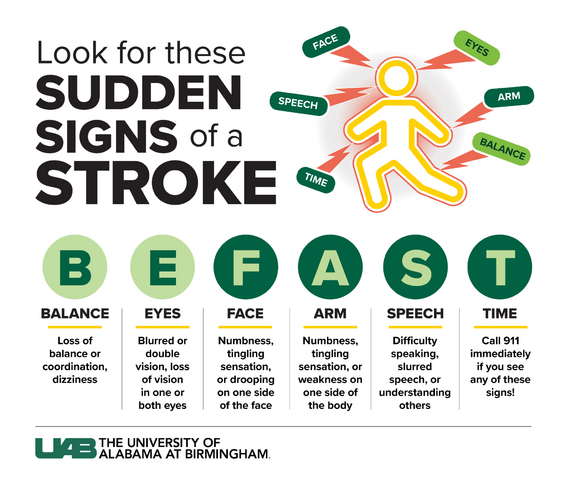 Leveraging the existing Alabama Trauma and Statewide Stroke systems, UAB and ADPH created a model for a more integrated and effective system of emergency stroke care.When a stroke hits, time is of the essence. The longer the time to treatment, the longer brain cells are deprived of oxygen and the higher the risk for poor outcomes, including disability and death.
Leveraging the existing Alabama Trauma and Statewide Stroke systems, UAB and ADPH created a model for a more integrated and effective system of emergency stroke care.When a stroke hits, time is of the essence. The longer the time to treatment, the longer brain cells are deprived of oxygen and the higher the risk for poor outcomes, including disability and death.
The University of Alabama at Birmingham and Alabama Department of Public Health have launched a new system aimed at improving Alabama’s stroke response. Leveraging the existing Alabama Trauma and Statewide Stroke systems, they created a model for a more integrated and effective system of emergency stroke care. The implementation of the new model in all six of the emergency medical services regions in the state was completed in October 2024.
“When people with severe stroke are taken to hospitals or centers that do not have the proper resources, we lose valuable time,” said Toby Gropen, M.D., the James H. Halsey Jr., M.D. Endowed Professor in the Department of Neurology, director of the UAB Comprehensive Neurovascular and Stroke Center, and principal investigator of the project.
Learn more about StrokeSTAT.
The response model comes from the “Trauma Communications Center Coordinated Severity-Based Stroke Triage” project. The National Institute of Neurological Disorders and Stroke, one of the National Institutes of Health, awarded UAB $2.5 million in 2020 to begin the five-year stroke response quality improvement initiative, also known as StrokeSTAT. In addition to UAB researchers, the StrokeSTAT team includes the Alabama Department of Public Health, the Alabama Trauma Communications Center, the Birmingham Regional Emergency Medical Services System, and hospitals and EMS providers across the state.
 Learn how to identify a stroke with these signs.
Learn how to identify a stroke with these signs.
Click image to enlarge.
Graphic: Jody PotterIn the first three years, the team focused on training all EMS providers to identify large vessel occlusion strokes and designating more hospitals that could provide thrombectomy for LVOs. Stroke symposiums were held across the state to increase overall stroke education among physicians, nurses and EMS providers.
“Due to the time sensitivity of a stroke, the ability to identify LVOs helps determine the appropriate level of care without over- or under-triaging,” said Jamie Gray, state EMS director, ADPH. “This knowledge paired with the implementation of the new model will prevent delays in treatment and increase patients’ chances of survival.”
The team then leveraged the current Alabama Trauma and Statewide Stroke systems infrastructure to develop a new coordination plan for acute stroke care. When an EMS provider suspects an LVO, they connect with the ATCC, who help with evaluation, monitor status of hospitals and route patients to the most appropriate facilities.
“The implementation of this model is a culmination of years of collaboration across state entities,” Gropen said. “Hopefully, the experience and data we learn from this model will not only save numerous lives in Alabama but will serve as a successful model for other states as well.”